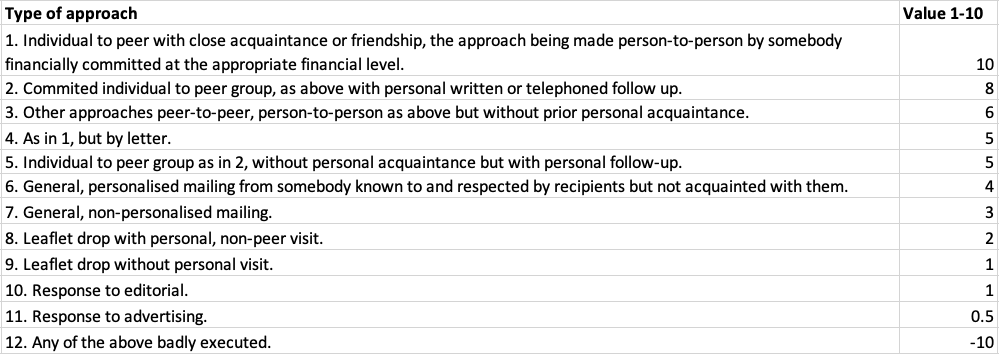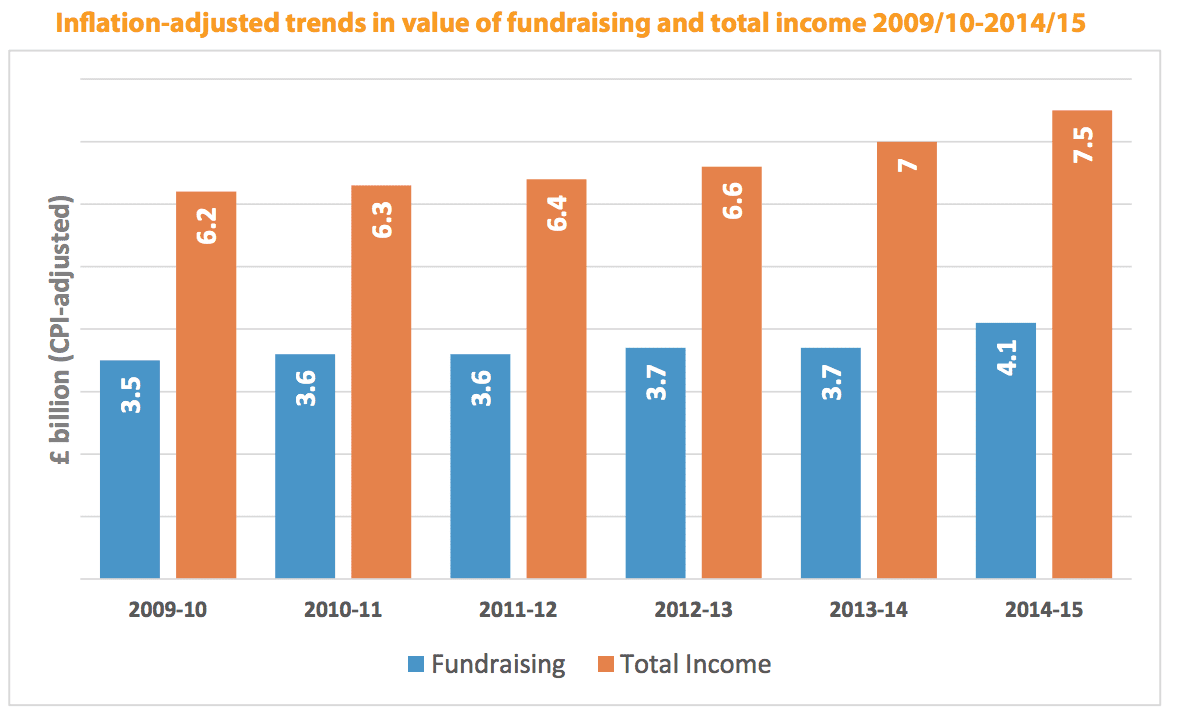The Ladder of Fundraising Effectiveness
As one of the founders of modern fundraising, Redmond Mullin left us a huge amount of his knowledge in his books. If you find a copy of Foundations of Fundraising and The Fundraising Handbook grab them.
Flick through a few pages and you'll soon find yourself nodding as you say "but of course". I had that experience recently when I stumbled on Redmond's Ladder of Effectiveness.
It's a simple approach to segmentation where the methods most likely to work for a given set of segments are applied in an order where they reinforce each other.
What Redmond has done that is particularly interesting is to use his experience to score how effective each approach will be. In short, the ladder gives you an idea of what you can raise using each technique or what you might lose if you get things wrong.
For example, getting a donor who is closely involved in your campaign to ask her friends face-to-face to give to a project that she supports, has an effectiveness rating of ten.
Get that same person to send a letter asking her friends for help and you can cut your potential income in half as it only has a rating of five. Drop a leaflet through her friends' doors and your potential income falls to 10% as the effectiveness rating falls to one. An ad aimed at that friend (when seen) reduces that response further by half.
This isn't just about major donor fundraising. I've found this approach broadly holds true for mid-value donors as well – even with direct mail.
At Bluefrog, we worked with one charity who had a well-known and influential financier as the signatory of a cold mid-value pack aimed at wealthy people – many of whom worked in the City of London. We would often find that gifts to his appeals (sent to cold lists) would be returned with personal notes from his friends saying how glad they were to help him out.
When this financier retired and stood down, we used a new signatory who lacked those same links to wealthy business people. The response to the appeal dropped like a stone.
We had the same offer, same content, same brand and same case studies. But without that recognised and respected peer, the power of the communication was significantly reduced.
The lesson from this – choose your signatories carefully.
We hear a great deal about Influencers today, normally related to social media. But the fact is, influencers have always been important in fundraising – we just used to call them fundraising leaders.
But getting back to the tile of this piece, there is another nugget of brilliance in Redmond's Ladder. And that's point twelve – any communications badly executed is scored at minus ten.
That is something I've found to be true over and over again. Get the wrong person to ask in the wrong way for the wrong amount and it can have a negative impact on a potential donor. Rather than raise money, it can push a supporter away.
So when building any approach to fundraising, think about who should be asking for help and how. It isn't always best to have the CEO. A volunteer trustee could work just as well – particularly if they have been a long-term supporter of a charity. But nothing beats someone that they know and trust. Now and again, even celebrities (there's more on that here) can have a positive impact on response.
And when that campaign is running well, and for some reason you want to change things – make sure you test. Donors are wonderful people, but just like the rest of us, they may not always act in the way you expect when your approach changes.
Tags In
The Essentials

Crack the Code to Regular Giving: Insights, Strategies, and a Special Giveaway!

‘Tis Halloween. Keep to the light and beware the Four Fundraisers of the Apocalypse!

Why do people give? The Donor Participation Project with Louis Diez.

A guide to fundraising on the back of a postcard

What does the latest research tell us about the state of fundraising?







